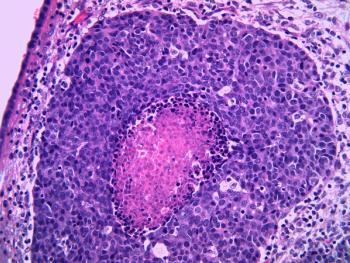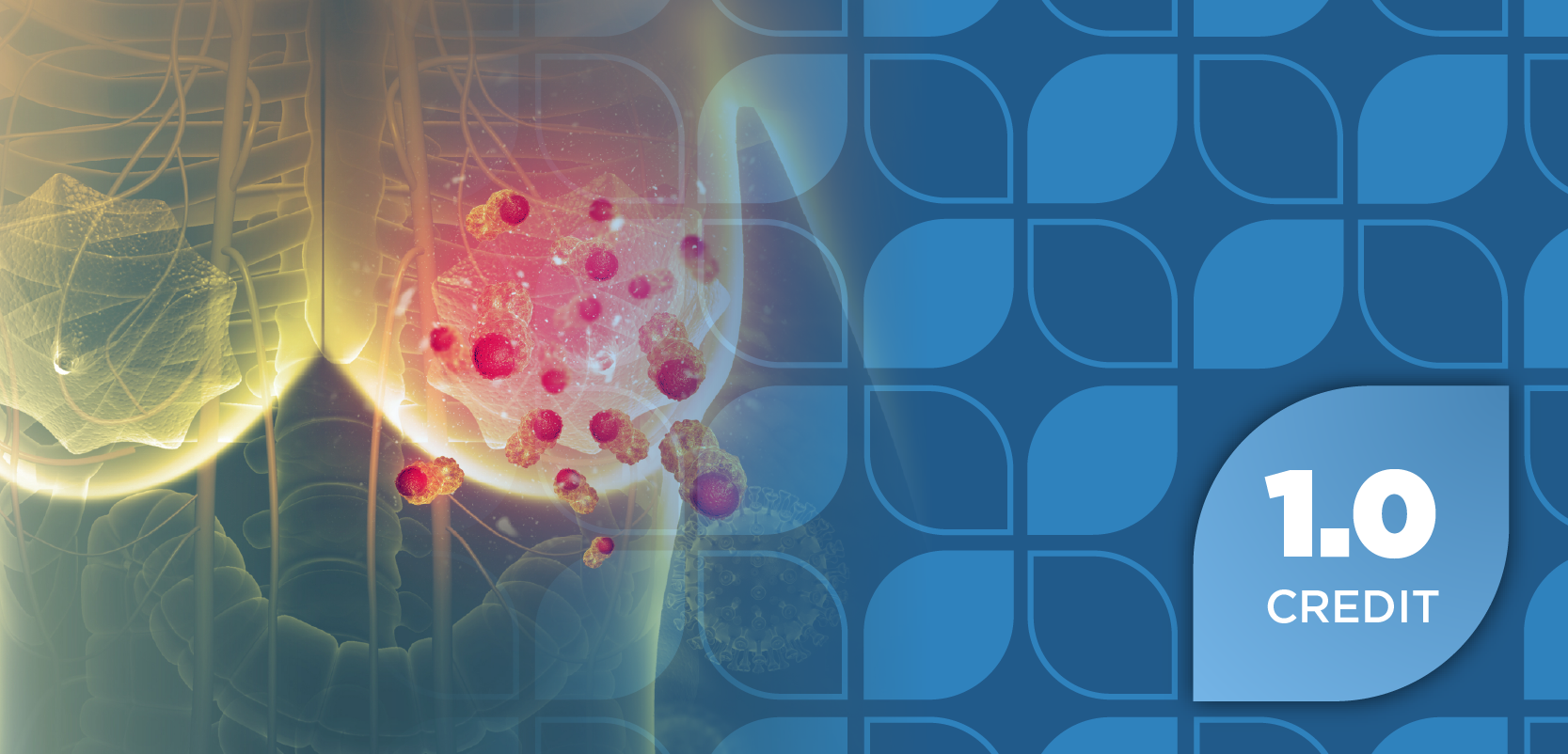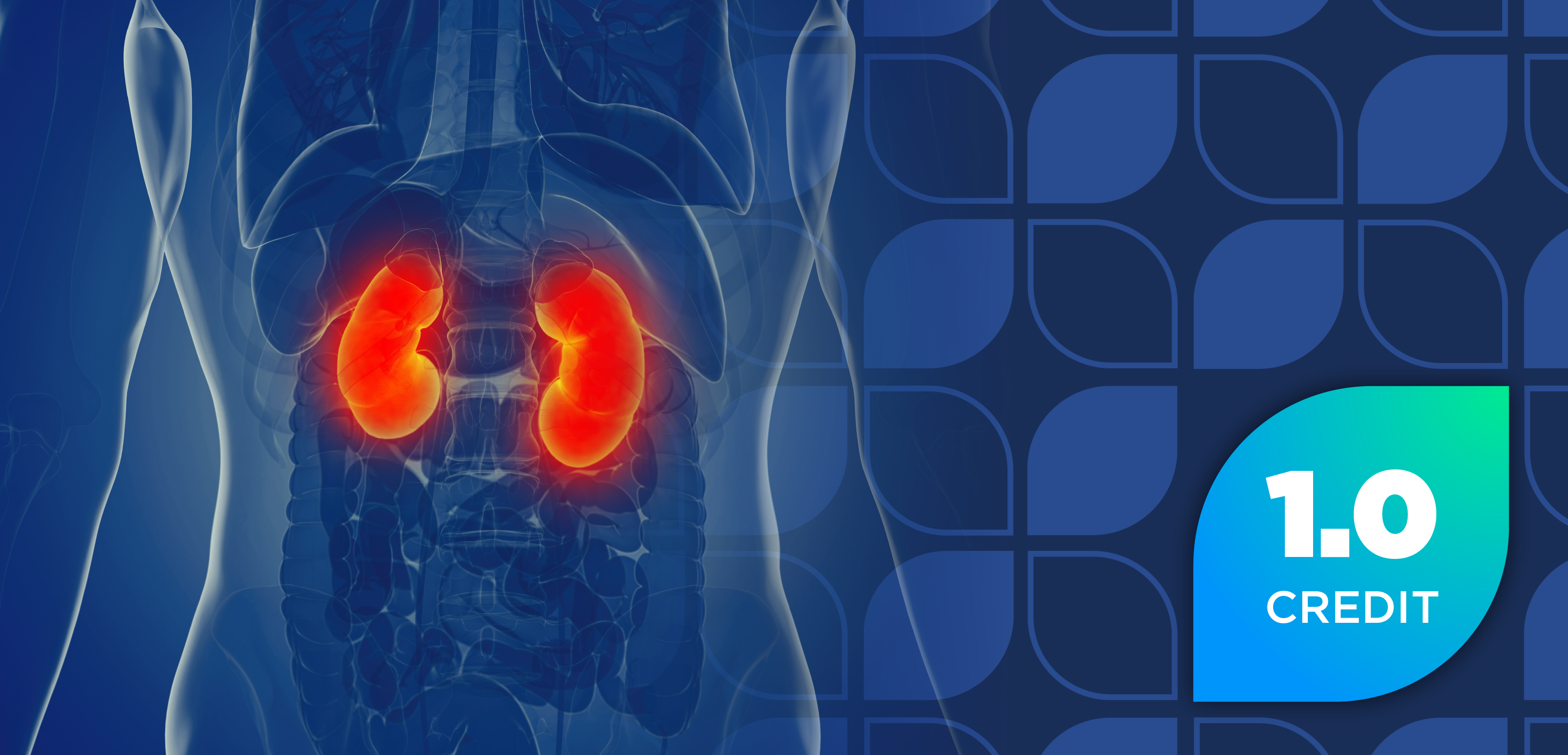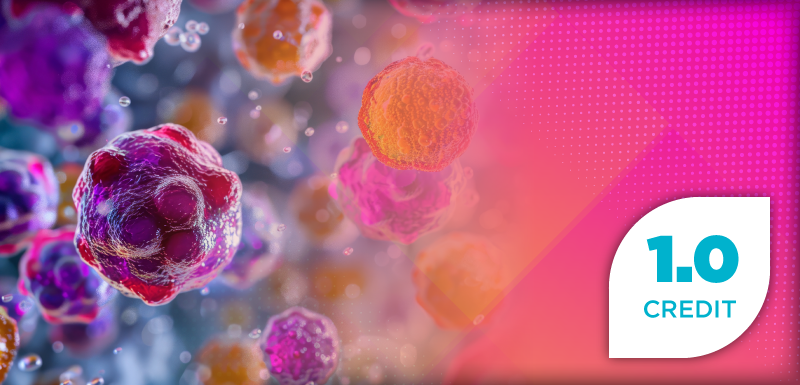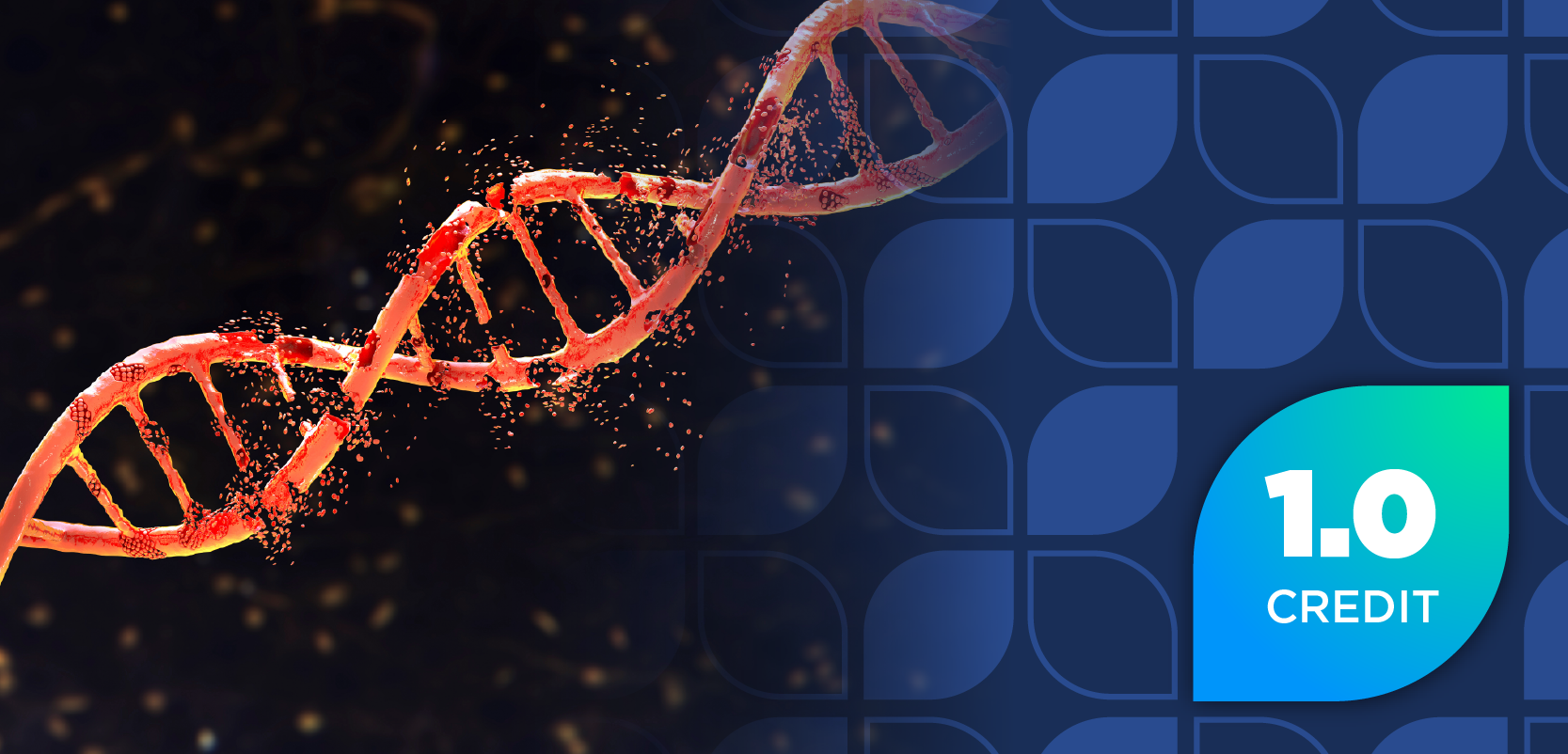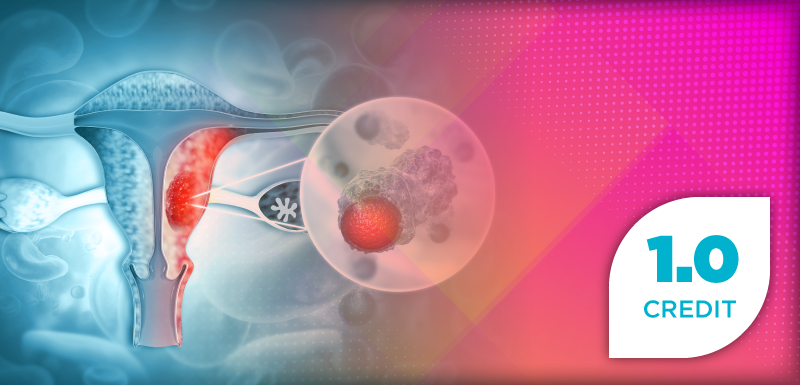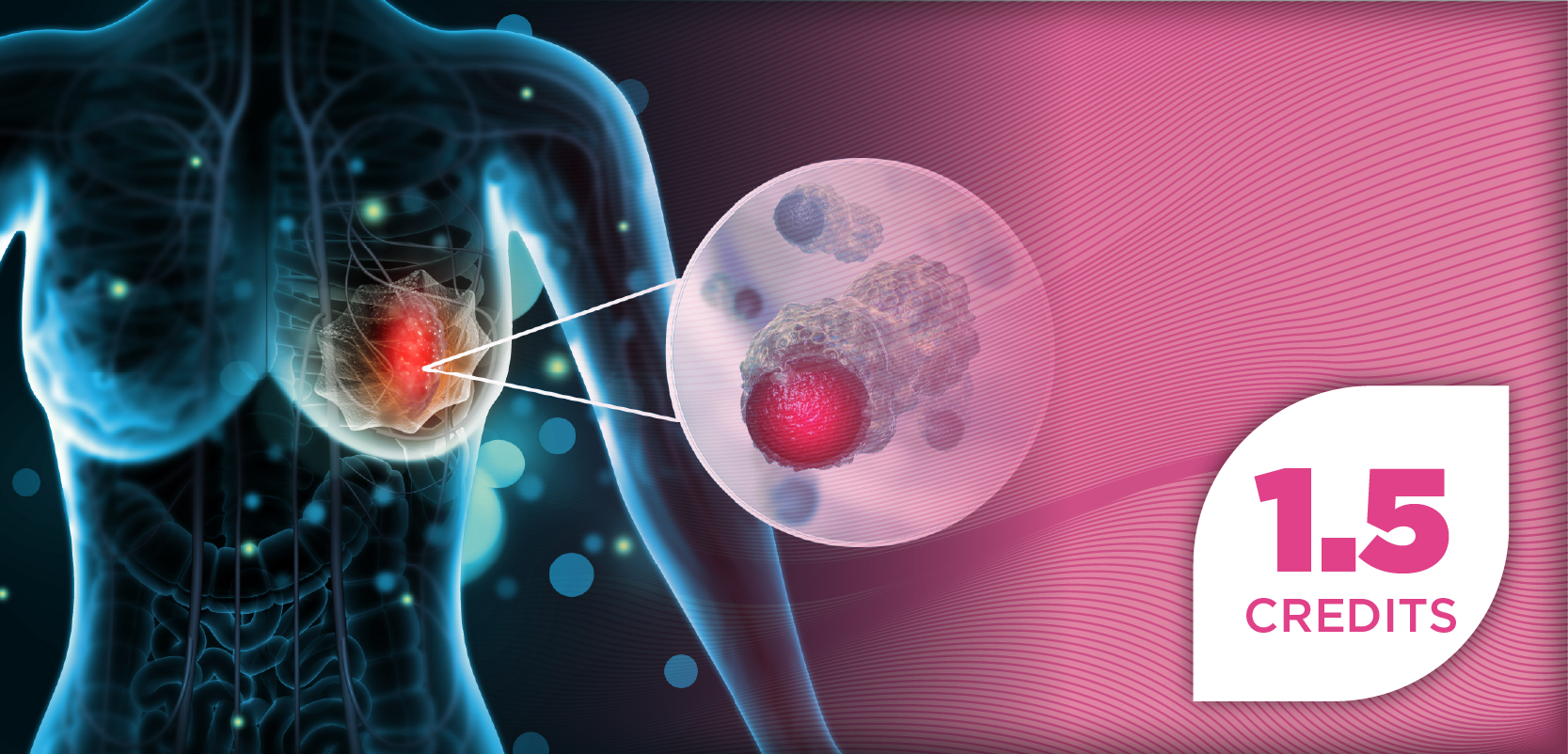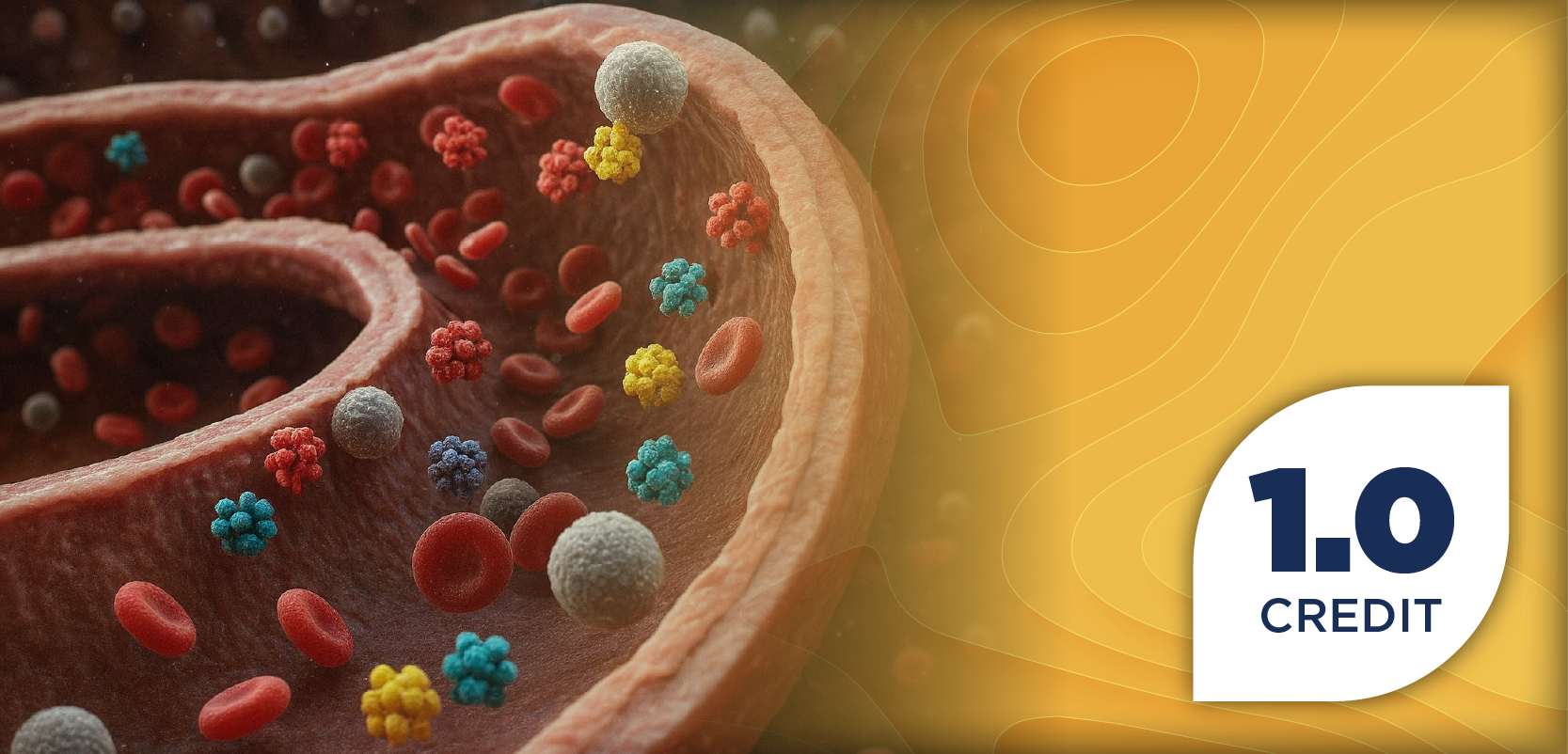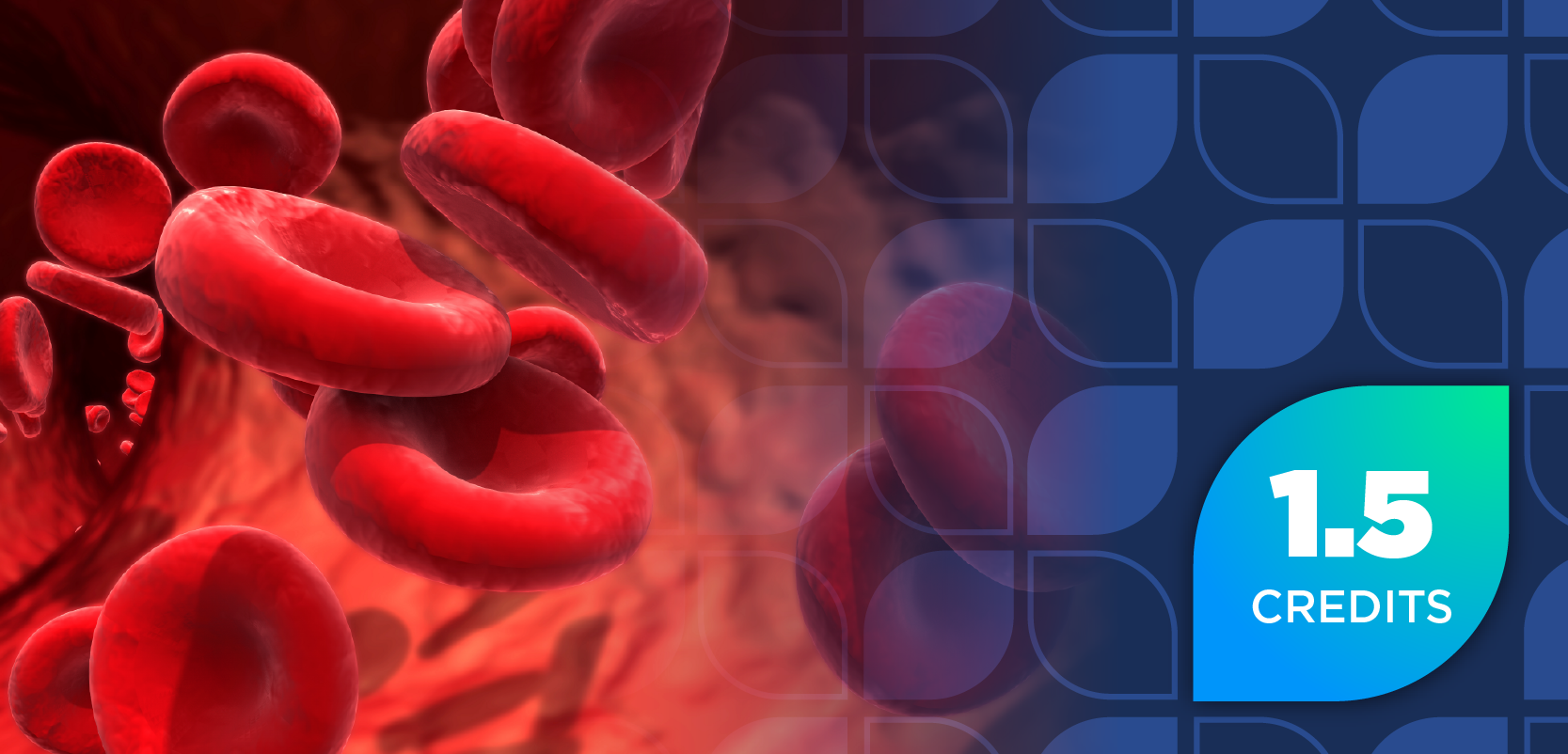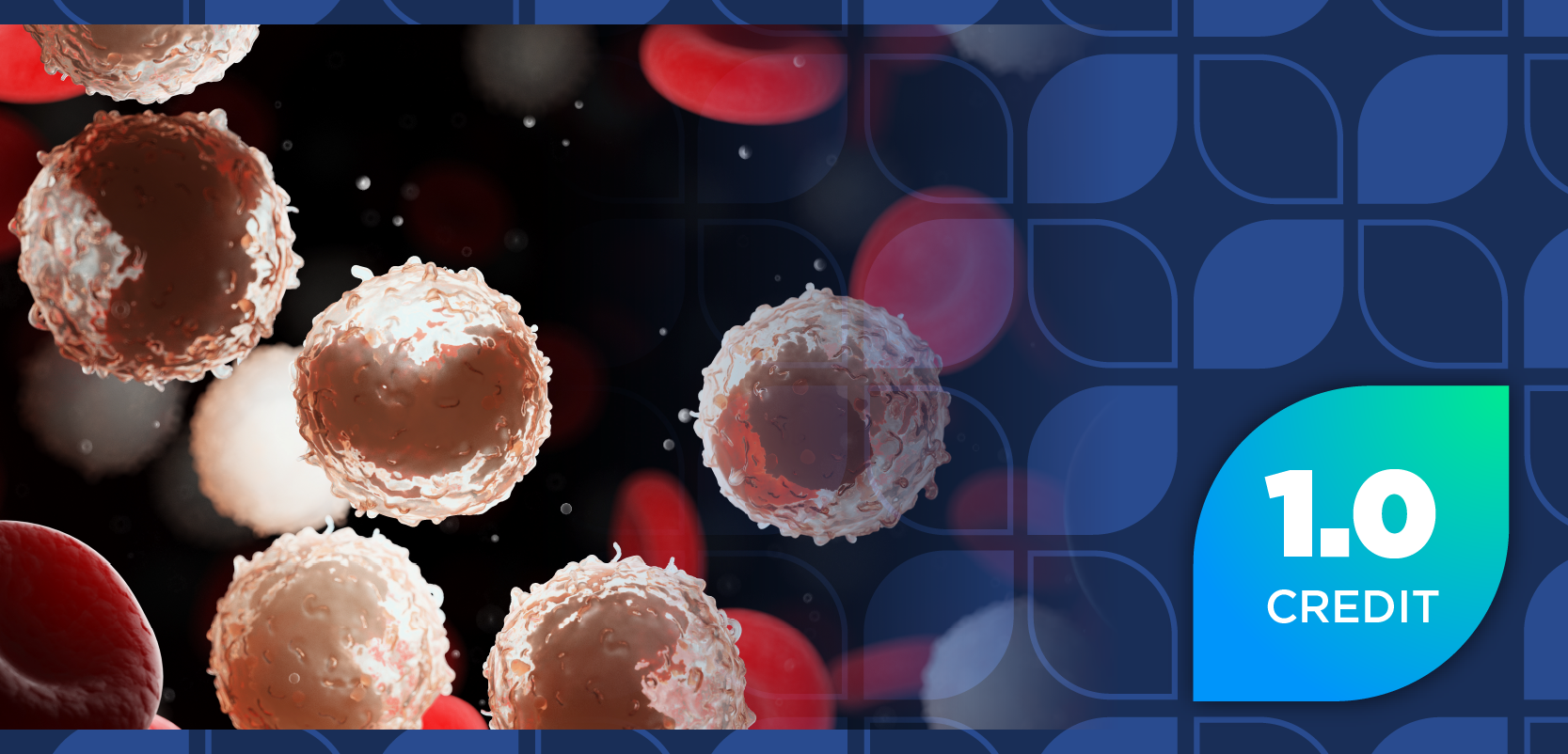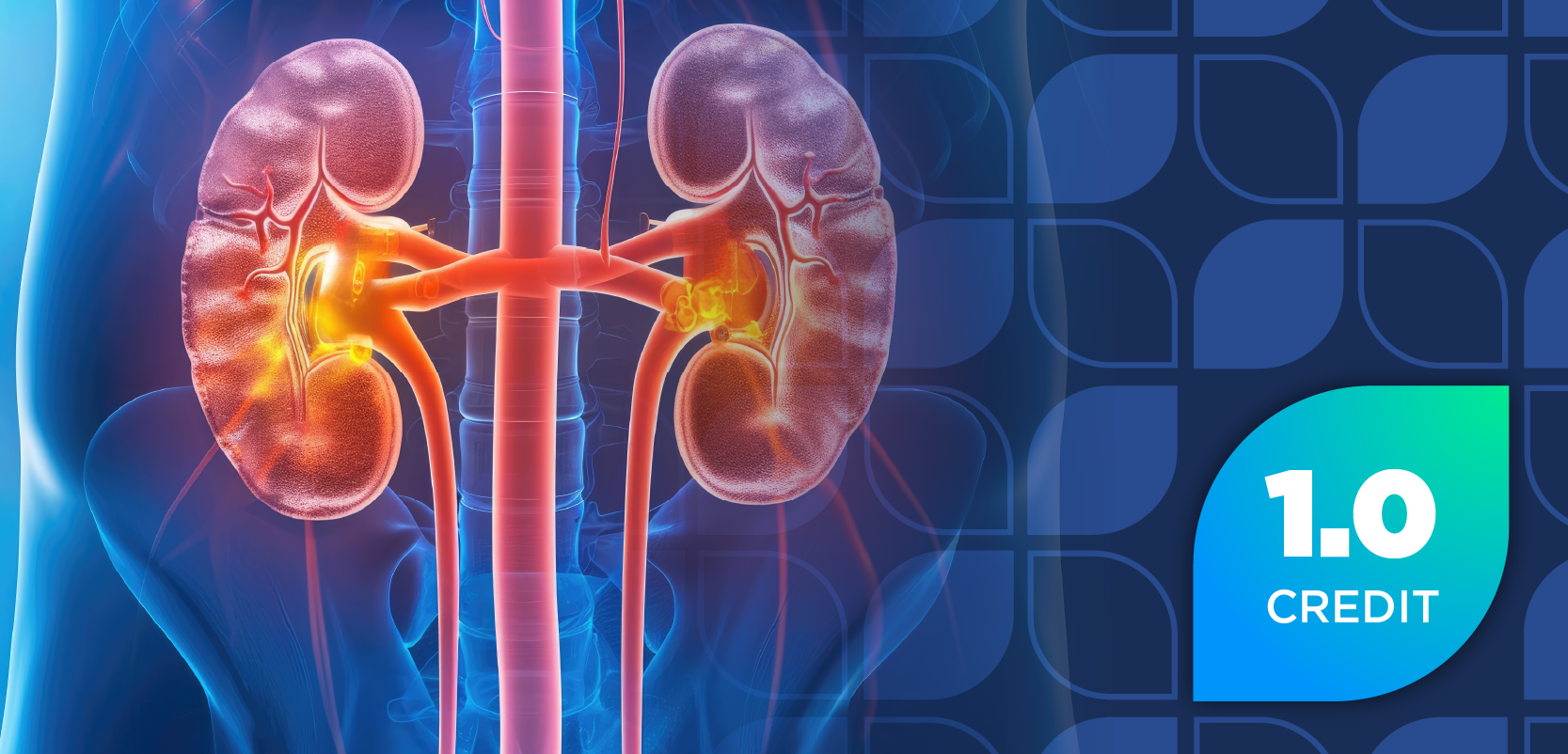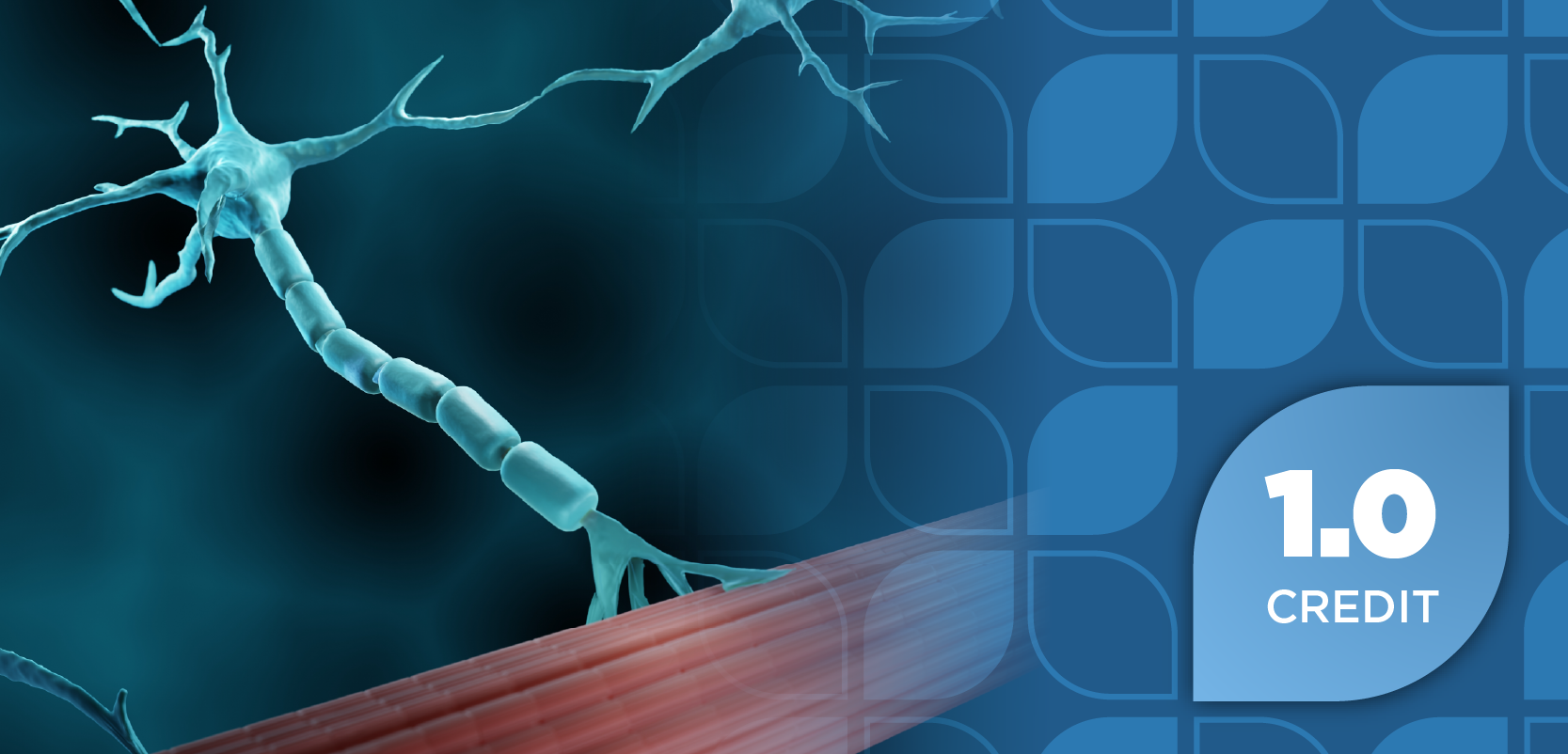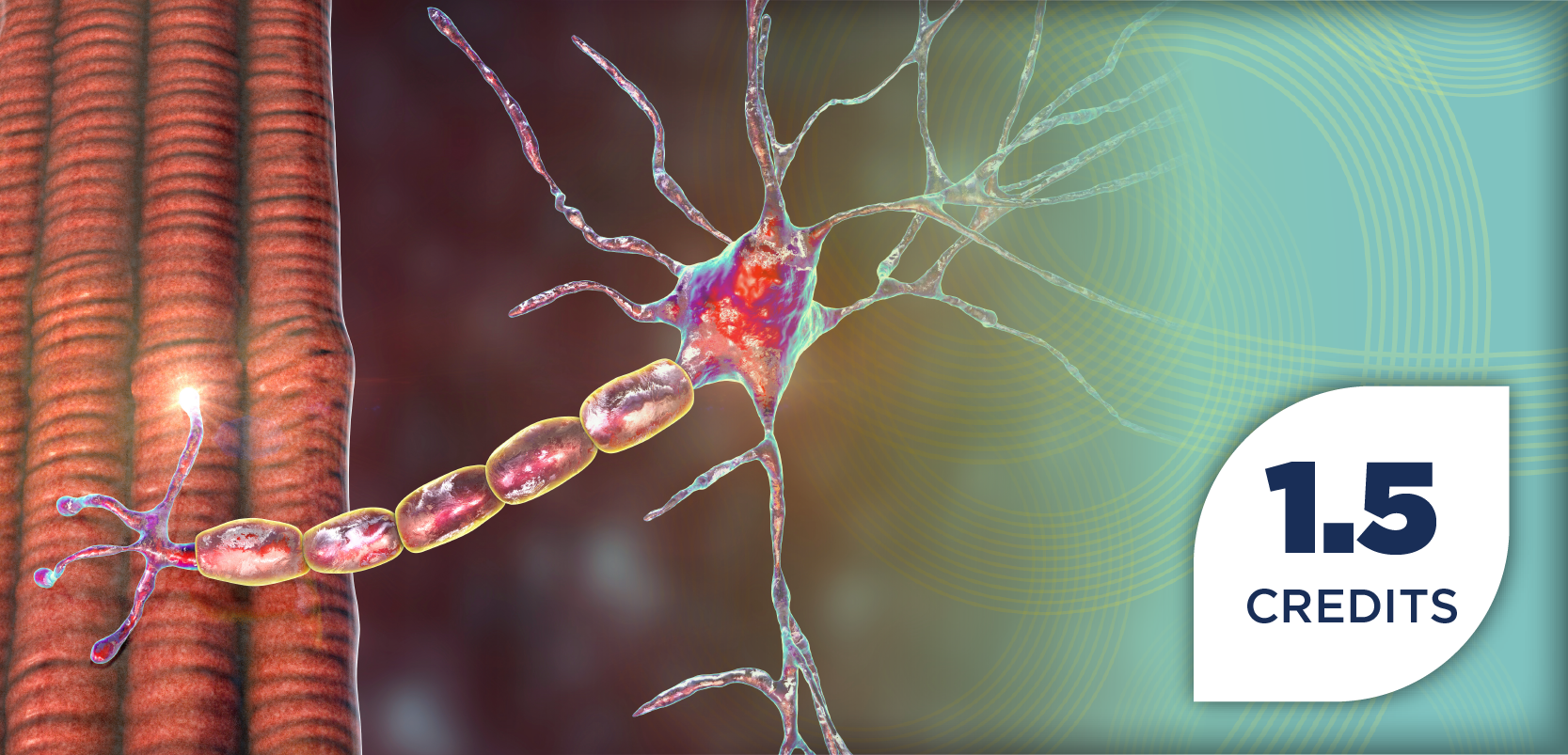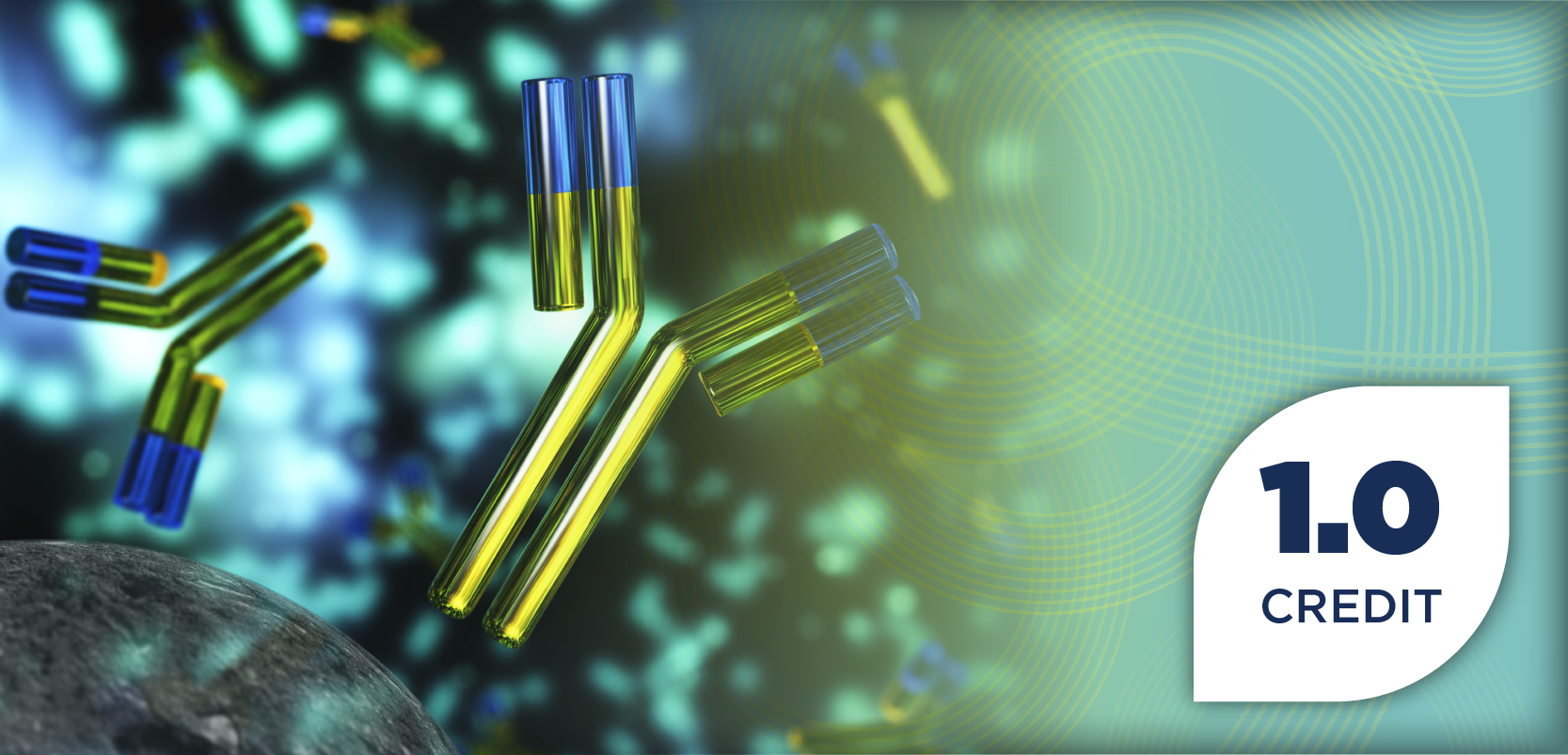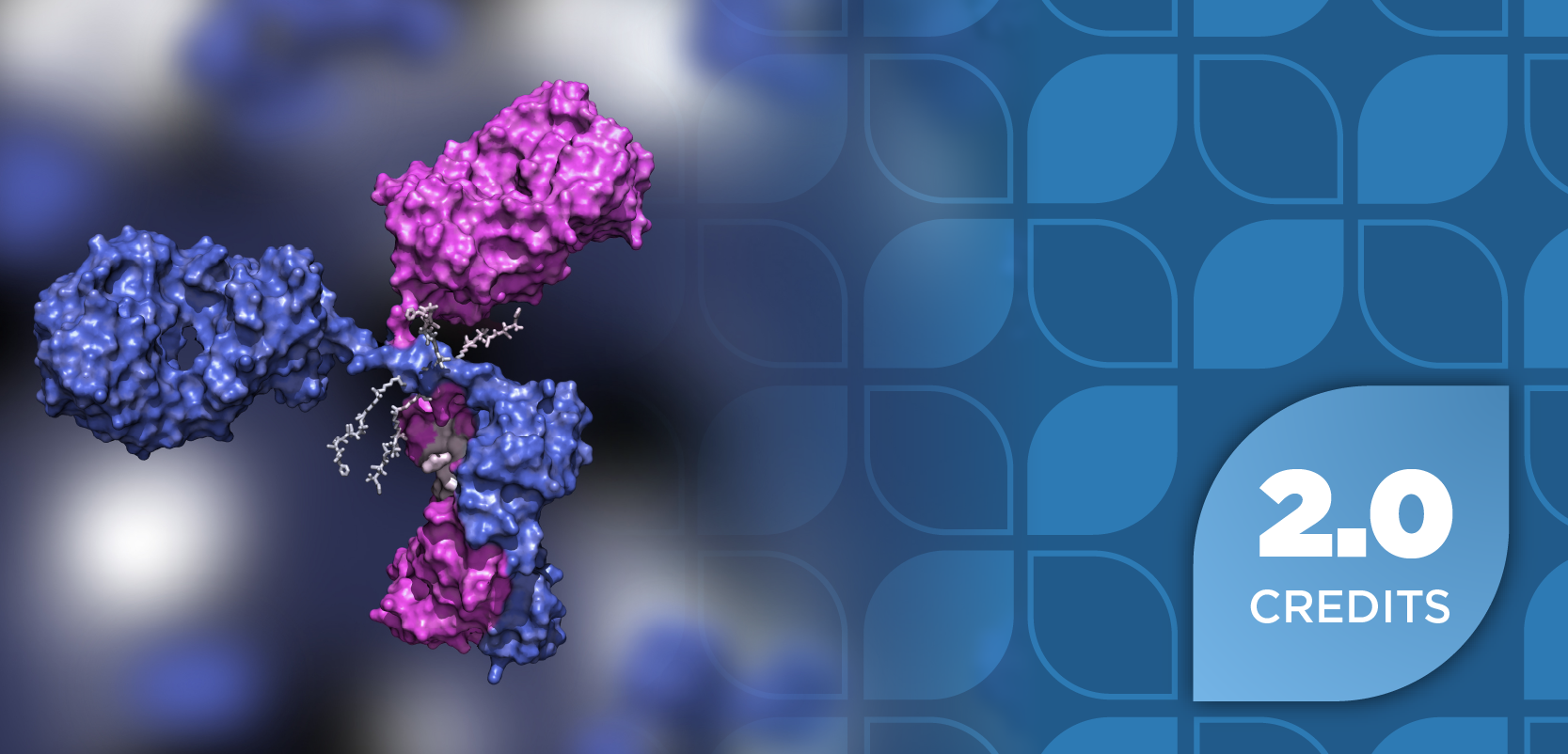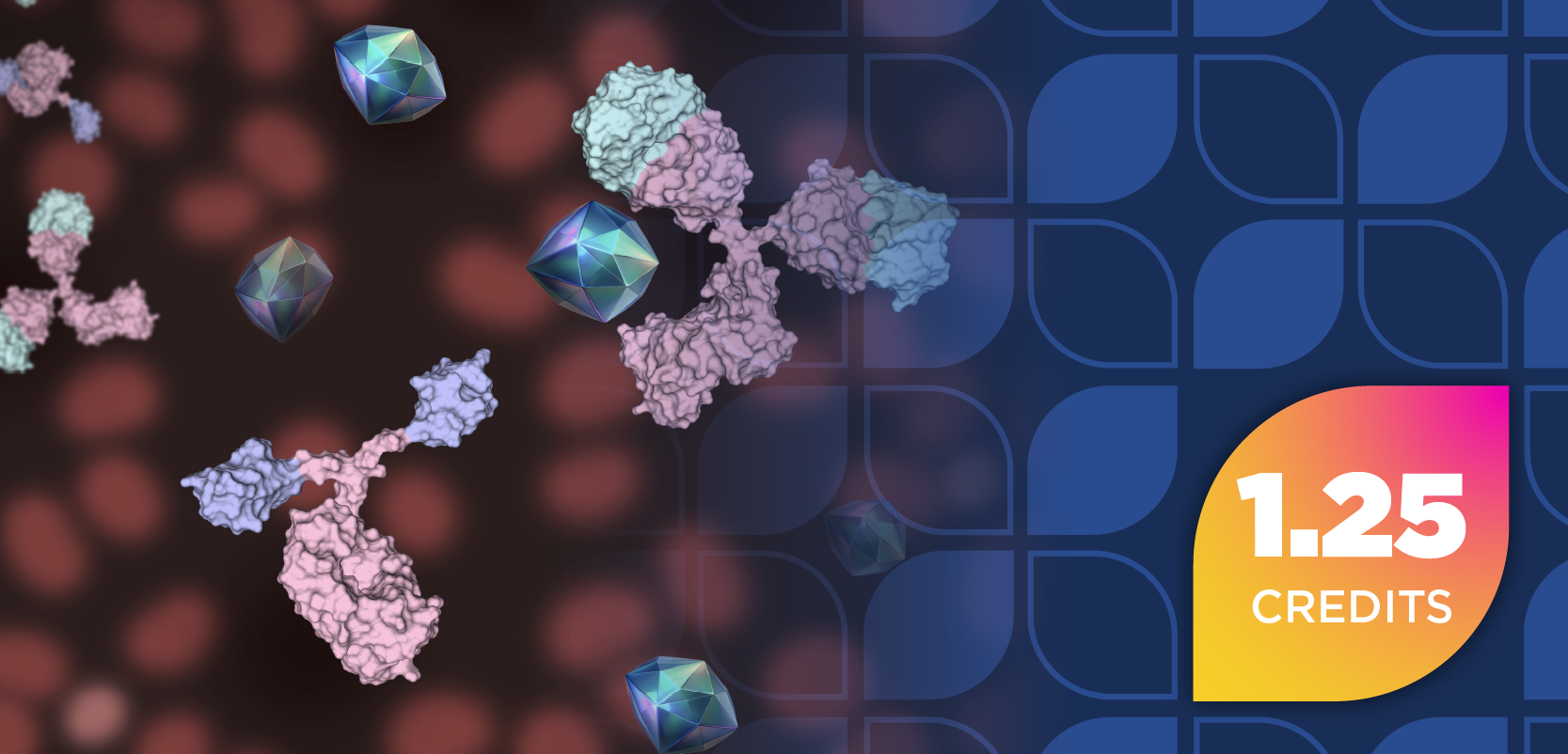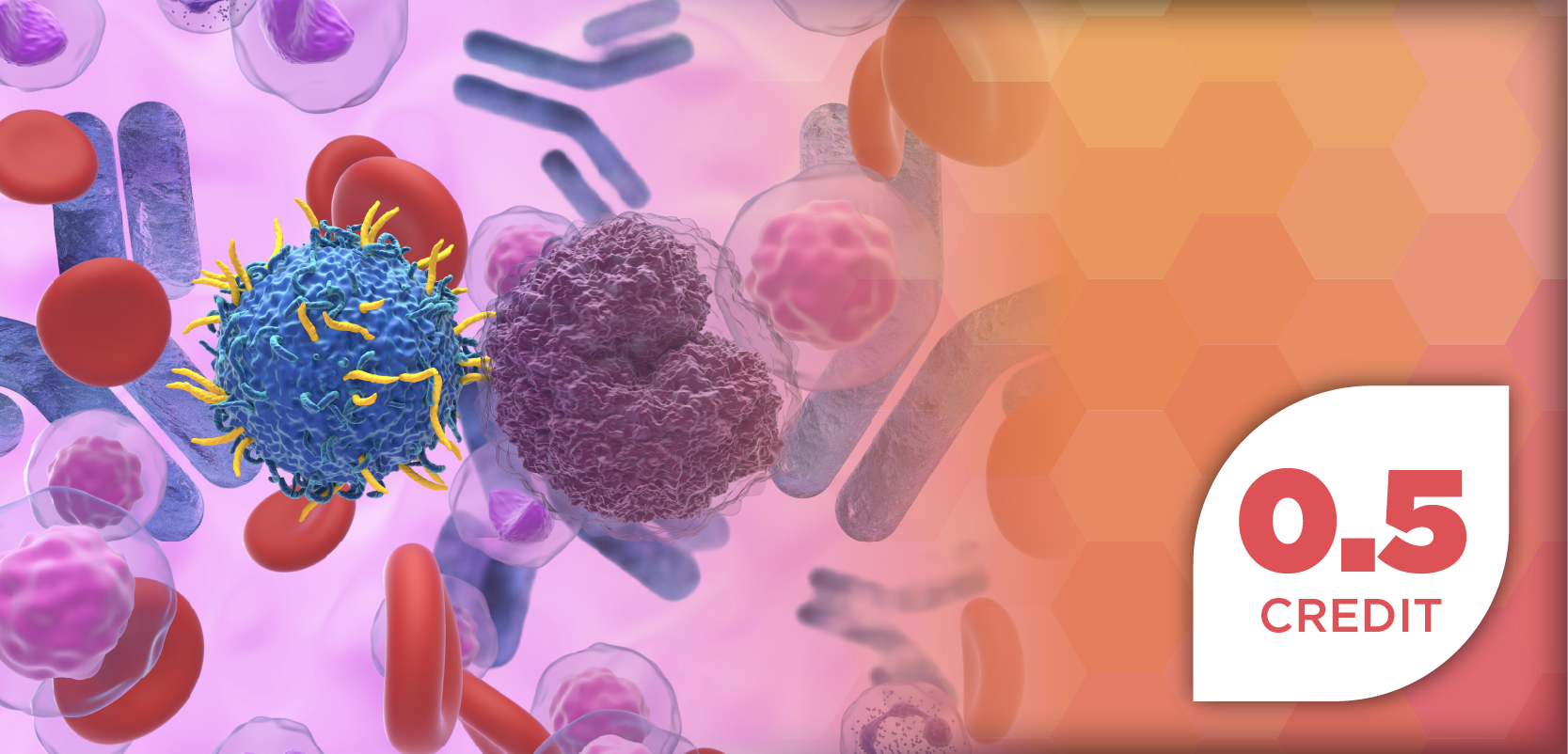Précis
DLL3 is an emerging therapeutic target in small cell lung cancer and other neuroendocrine carcinomas, with 1 FDA-approved therapy and several others under investigation.
Abstract
Small cell lung cancer (SCLC) is an aggressive neuroendocrine malignancy with high metastatic potential and limited therapeutic options. SCLC makes up approximately 15% of all lung cancer diagnoses, and patients with SCLC historically have had poor clinical outcomes because there are few effective treatments. Recent therapeutic advances, such as the addition of immune checkpoint inhibitors to first-line treatment, have marginally improved outcomes, but effective therapies, particularly in later-line treatment settings, remain limited. DLL3, a ligand in the Notch signaling pathway, is estimated to be expressed on the cell surface of 80% of SCLC cells, highlighting it as a potential therapeutic target. Several mechanistic classes of DLL3-targeting agents have been investigated, including antibody-drug conjugates, bispecific and trispecific antibodies, and chimeric antigen receptor T-cell therapy. This review will explore the DLL3-targeting therapies in development, with a focus on tarlatamab (Imdelltra; Amgen), a first-in-class DLL3 T-cell engager that recently received accelerated approval for and changed the landscape of SCLC treatment.
Background
Small cell lung cancer (SCLC) accounts for approximately 15% of lung cancer diagnoses and is associated with an aggressive disease course and short-lived responses to treatment.1-4 Approximately 250,000 new cases of SCLC are diagnosed globally every year, with the majority of these diagnosed as extensive-stage SCLC and not expected to be curable with treatment.4 Advances in the treatment of SCLC in recent years have included the first-line addition of PD-L1–blocking immunotherapy agents atezolizumab (Tecentriq; Genentech) or durvalumab (Imfinzi; AstraZeneca) to platinum-based doublet therapy and the second-line option of the alkylating agent lurbinectedin (Zepzelca; Jazz Pharmaceuticals).2,3,5 First-line immunotherapy and chemotherapy combinations resulted in similar median duration of response (DOR) to platinum doublet therapy (4.2 months for atezolizumab with chemotherapy; 5.1 months for durvalumab with chemotherapy) but have been noted to have a significant benefit in a subset of patients who respond, increasing the estimated 2-year survival from 11% to 22%.2,3
Despite these new therapeutic options, median overall survival (OS) for patients with SCLC from the time of first-line treatment remains approximately 12 months, highlighting the unmet clinical need in this patient population. Broadly speaking, in contrast to non–small cell lung cancer (NSCLC), SCLC lacks recurrent oncogenic driver mutations that are considered therapeutically targetable. This has limited the development of highly effective targeted therapies and biomarker-driven treatment paradigms, such as those seen in subsets of NSCLC.6-8
Recently, however, transcriptional profiling has led to the discovery of novel molecular subsets of SCLC and potential therapeutic targets, leading to the push for development of therapies targeting proteins such as EZH2, TROP2, and DLL3.9,10 Of these, therapies targeting DLL3 have had the earliest success in clinical trials. Several DLL3-targeted agents are either in development or have received accelerated approval from the FDA based on surrogate end points. These targeted agents include bispecific and trispecific antibodies, antibody-drug conjugates (ADCs), and chimeric antigen receptor (CAR) cellular therapy. Here, we present an overview of these agents, their mechanisms, and their current development status, with a particular focus on the recently approved DLL3 bispecific antibody tarlatamab (Imdelltra; Amgen) in SCLC.
DLL3 and the Notch Signaling Pathway
DLL3 plays a role in cellular differentiation and proliferation through the Notch signaling pathway.11,12 The Notch pathway can promote either oncogenic or tumor suppressor functions, depending on the cell and tumor type; in neuroendocrine tumors, it acts primarily as a tumor suppressor.11 Notch1-4 receptor ligand activation and expression are dependent on transcription factors, including ASCL1, which is a key regulator of pulmonary neuroendocrine cell development in SCLC.11,12 ASCL1 expression has been correlated with higher DLL3 expression in these neuroendocrine carcinomas.11 DLL3 is the sole ligand in the Delta/Serrate/Lag-2 family that consistently inhibits Notch signaling, preventing the Notch receptor localization to the cell surface.12 This inhibitory effect of DLL3 in the setting of neuroendocrine tumors prevents the typical tumor suppressor function of Notch signaling.
DLL3 expression in normal tissues is primarily located intracellularly in the Golgi apparatus and cytoplasm.11 In neuroendocrine carcinomas, however, DLL3 is abnormally overexpressed and detectable on the cell surface. In SCLC, 85% to 94% of patients have been shown to have positive DLL3 expression (defined as expression on ≥ 25% of tumor cells), with similar expression across primary vs metastatic sites and at initial diagnosis vs disease recurrence.1,13 Elevated DLL3 expression has also been confirmed in other neuroendocrine tumors, including Merkel cell carcinoma, gastroenteropancreatic neuroendocrine neoplasms, small cell bladder cancer, and large cell neuroendocrine carcinoma.14-17 This aberrant expression promotes the growth of SCLC and neuroendocrine cells. Expression of DLL3 has not been shown to correlate to age, sex, stage of disease, or previous therapy.13 The inhibition of the Notch pathway tumor suppression function by DLL3 and the unique cell surface expression in neuroendocrine carcinomas including SCLC make DLL3 a viable and compelling target for antineoplastic treatment.
T-Cell Engagers
Bispecific T-cell engagers (TCEs) are monoclonal antibody–based therapies that stimulate the activation of T cells upon binding to their targets.18 The bispecific TCE antibody structure targets 2 distinct antigen binding sites, one a unique target on tumor cells and the other the CD3 receptor on T cells. TCE therapies are proving to be an effective treatment approach for patients with cancers that express unique antigens on the tumor cell surface, with multiple approvals in recent years in subtypes of leukemia, lymphoma, melanoma, and multiple myeloma.19-24 Because of the immune stimulation, administration of these agents may require inpatient monitoring, close follow-up with the health care team, and rapid supportive care management if cytokine release syndrome (CRS) and neurotoxicity occur.25
Tarlatamab
Tarlatamab is a recently FDA-approved bispecific TCE that binds to DLL3 expressed on SCLC cells and CD3 expressed on T cells.1 Binding at both antigen binding sites induces T-cell activation and cytokine production, and T-cell engagement and T-cell–mediated lysis are directed to the DLL3-expressing SCLC cells through a proximity-based effect. Tarlatamab also contains an immunoglobulin G crystallizable fragment domain on its molecular structure, which prolongs its half-life and allows for prolonged dosing intervals.26
Tarlatamab was granted accelerated approval in the US on May 16, 2024, based on data from DeLLphi-301 (NCT05060016), a phase 2 open-label trial that enrolled 222 patients with relapsed or refractory (R/R) SCLC following at least 2 other lines of therapy.27,28 Patients received step-up doses of 1 mg on the first day of treatment, followed by 10 mg or 100 mg on days 8 and 15, and every 2 weeks thereafter.
Trial enrollment was divided into 3 parts: part 1, which randomly assigned patients to the 10-mg or 100-mg target dose cohorts; part 2, which was a dose expansion of the selected dose of 10 mg; and part 3, a substudy looking at the duration of required inpatient monitoring. There was no dose-response relationship identified between the 10-mg and 100-mg doses, but there was a higher rate of neurologic toxicity in patients who received 100 mg, leading to the selection of 10 mg as the target dose. Of the 100 patients who received the selected target dose of 10 mg in parts 1 or 2 of the study, 40% had an objective response with 2 (2%) complete responses, and a majority of patients who responded (59%) experienced a DOR of at least 6 months. The 10-mg cohort experienced a progression-free survival (PFS) of 4.9 months (95% CI, 2.9-6.7) and median OS of 14.3 months.1
As seen with other TCEs, CRS was the most common adverse event (AE), occurring in 51% of patients who received the target 10-mg dose across parts 1 to 3 of the study.1 One of these cases was a grade 3 event, and all others were grade 1 or 2 (30% and 20% of patients treated, respectively) (Table 11,27). CRS occurred at a median of 13.1 hours after the most recent dose, and the most common symptoms of CRS included fever, hypotension, and hypoxia. Tocilizumab (Actemra; Genentech), an IL-6 receptor antagonist, was given in 5.3% of patients receiving the tarlatamab 10-mg target dose across all 3 study parts, and most cases were managed with supportive care, including supplemental oxygen, acetaminophen, and glucocorticoids. Neurotoxicity, including immune effector cell–associated neurotoxicity syndrome (ICANS), occurred in 8% of patients, and all cases were grade 1 or 2. Other common AEs included decreased appetite (29%), pyrexia (35%), constipation (27%), anemia (26%), dysgeusia (29%), and fatigue (23%). Treatment interruption or dose reduction due to AEs occurred in 13% of the 10-mg group, and treatment discontinuation was necessary in 3% of patients.
Tarlatamab’s prescribing information recommends dexamethasone premedication and close observation for 22 to 24 hours following step-up dosing of 1 mg on day 1 and 10 mg on day 8 to prevent or facilitate the early identification of CRS and/or ICANS.28 For gaps in treatment greater than 2 weeks, repeating the 1-mg step-up dose may be recommended depending on the patient’s current treatment cycle. Patients and health care providers should be educated on early symptoms of CRS or ICANS, including fever, hypotension, tachycardia, hypoxia, and fatigue. Early supportive care and treatment with tocilizumab or corticosteroids should be administered if needed as per the prescribing information. If a patient experiences grade 2 or higher CRS or neurotoxicity, then extended monitoring is recommended with their next infusion, regardless of the treatment schedule.
Tarlatamab is being studied in a confirmatory phase 3 trial (DeLLphi-304, NCT05740566) vs other later-line standard-of-care agents in SCLC, including lurbinectedin and topotecan.29 Its use is also being explored in treatment of limited-stage SCLC following treatment with chemoradiation (phase 3 DeLLphi-306 [NCT06117774]), in combination with immunotherapy and chemotherapy as first-line treatment of extensive-stage SCLC (phase 3 DeLLphi-305 [NCT06211036] and phase 1 DeLLphi-303 [NCT05361395]), and in neuroendocrine prostate cancer (phase 1 DeLLpro-300 [NCT04702737]), in addition to other trials (Table 2).27-50
BI 764532
BI 764532 (Boehringer Ingelheim) is another DLL3 TCE in clinical development. Similar to tarlatamab, BI 764532 is a DLL3-targeting TCE that binds to CD3 on T cells, inducing lysis of DLL3-expressing cells. Initial results from a phase 1 open-label, dose-escalation trial (NCT04429087) testing BI 764532 in patients with DLL3-positive advanced SCLC or neuroendocrine carcinoma were presented at 2023 World Conference on Lung Cancer.36,51 In this study, 107 patients received BI 764532 at 1 of 3 different dosing regimens for a maximum treatment duration of 36 months. Dosing is initiated with a fixed dose once every 3 weeks to avoid excess drug accumulation. Once the selected dose was determined, dosing frequency increased to once weekly. Of the total study population, 53 patients had a diagnosis of advanced SCLC. All patients had received at least 1 prior line of treatment, and 31% of patients had received at least 3 prior lines of therapy. At the time of presentation, the maximum tolerated dose had not yet been reached and dose escalation was still ongoing. Of the patients who received a dose of at least 90 mcg/kg and had a postbaseline tumor assessment, 10 of the 39 patients (26%) with SCLC and 3 of the 5 patients (60%) with large cell neuroendocrine lung carcinoma experienced a partial response. Responses were ongoing in 10 of the 13 responders, with a range in treatment duration from less than 1 month to 10.6 months. The most common AEs were those expected with a TCE and included any-grade CRS (48%), pyrexia (17%), and decreased lymphocytes (24%). Multiple phase 1 and phase 2 trials testing BI 764532 are ongoing, including the phase 2 DAREON-5 study (NCT05882058) for treatment of DLL3 expression-independent SCLC and other neuroendocrine carcinomas following at least 1 platinum-based regimen (Table 2).27-49
Additional Bispecific and Trispecific Antibodies PT217
DLL3-targeted bispecific antibodies using alternative antigen targets to CD3 are being investigated as a therapeutic option in SCLC. One example is PT217, a bispecific antibody targeting DLL3 and CD47, which is also expressed on the surface of SCLC cells.29 The normal function of CD47 on SCLC cells is to inhibit macrophage-mediated cell lysis. PT217 binding to the CD47 receptor blocks the negative regulation of macrophages and allows for the natural killer (NK) cell- and macrophage-mediated cell phagocytosis of cells that express DLL3.30 PT217 has been granted a fast-track designation by the FDA and is being studied in the phase 1/2 SKYBRIDGE trial (NCT05652686; Table 227-49) in patients with SCLC and other neuroendocrine carcinomas expressing DLL3 who have previously been treated with all existing standard-of-care treatments.
HPN328/MK-6070
Trispecific antibodies, or trispecific T-cell engager (TriTE) molecules, bind to CD3 on T cells, the cancer-specific target, and human serum albumin, which is used to extend the serum half-life of the compound.52,53 A DLL3-targeted TriTE, previously known as HPN328 and now known as MK-6070, is being investigated for use in neuroendocrine carcinomas both as monotherapy and in combination with atezolizumab or investigational agent ifinatamab deruxtecan (I-DXd; Daiichi Sankyo and Merck).53,54 Interim results from the initial 3+3 dose escalation portion of the phase 1/2 study (fixed-dose escalation, early step-dose escalation, and dose optimization cohorts) included data from 97 patients (56 with SCLC, 18 with neuroendocrine prostate cancer, and 23 with other high-grade neuroendocrine neoplasms). At the time of data cutoff, 1 mg was determined as the maximum tolerated priming dose, and the maximum tolerated target dose had not been reached. Target doses of either 12 or 24 mg every 1 or 2 weeks are being studied in the dose optimization cohort. Forty-one of the 97 patients, whose data were presented at the 2024 American Society of Clinical Oncology Annual Meeting, received a target dose of MK-6070.53-55
Of these 41 patients in the dose optimization cohort, the objective response rate (ORR) was 39% in 28 patients with SCLC and 46% in 13 patients with other neuroendocrine neoplasms. CRS occurred in 63% of the 97 treated patients, with grade 3 or greater CRS seen in 3% of patients, and a majority of CRS events occurred following the first dose. ICANS occurred in 7% of patients, all grade 1 or 2. Other AEs included fatigue (37%), dysgeusia (36%), nausea (23%), and vomiting (21%). Treatment-related respiratory failure and pneumonitis led to death in 1 patient each, and 4% of patients discontinued treatment due to AEs. The recommended phase 2 dose of MK-6070 will be determined after further evaluation of monotherapy and atezolizumab combination cohorts. Primary completion of the phase 1/2 completion (NCT04471727) is estimated to occur in July 2025 (Table 2).27-49
RO7616789/RG6524 and QLS31904
Two additional bispecific and trispecific antibodies targeting DLL3-expressing cells are being investigated in phase 1 trials. RO7616789, also referred to as RG6524, is a trispecific TCE that targets DLL3 on tumor cells and CD3 and CD137 on T cells.45 Concurrent binding to CD3 and CD137 synergistically stimulates T-cell function, redirecting T-cell activity to the DLL3-positive cells. QLS31904 is a TCE that binds to both DLL3 on tumor cells and CD3 on T cells.46 Initial results from these 2 studies (NCT05619744; NCT05461287) are not yet available (Table 2).27-49
Antibody-Drug Conjugates
Utilizing a slightly different targeted therapy approach than that used with bispecific antibodies, ADCs were developed to enable delivery of cytotoxic therapy to cancer cells with a specific cell surface target. ADCs are comprised of a monoclonal antibody, a linker, and a cytotoxic agent.56,57 The linker component prevents early release and nontargeted delivery of the cytotoxic compound and is typically designed to cleave under specific conditions, such as a change in pH or via enzymatic degradation.58 Cell surface antigens such as DLL3 that are specific to the tumor cells have been identified as effective targets for ADC development, for similar reasons as outlined above for bispecific and trispecific antibodies.59 However, in practice, ADCs have thus far shown less clinical promise than other DLL3-targeted therapies.
Rovalpituzumab Tesirine
Rovalpituzumab tesirine (Rova-T; AbbVie) is an ADC comprised of a DLL3-targeted antibody (rovalpituzumab) linked to a cytotoxic pyrrolobenzodiazepine DNA crosslinking compound (tesirine).60,61 After Rova-T binds to cells with DLL3 expressed on the cell surface, the protease-dependent linker is cleaved and selectively delivers the cytotoxic payload to the DLL3-positive cells. Initial data from a phase 1 trial (NCT01901653) testing Rova-T in R/R SCLC demonstrated an 18% ORR (11 of 60 patients), including 38% (10 of 26 patients) of those with 50% or greater expression of DLL3 on tumor cells.37 However, subsequent phase 3 studies TAHOE (NCT03061812; Rova-T vs topotecan in the second line) and MERU (NCT03033511; Rova-T maintenance vs placebo following first-line platinum/etoposide) were both terminated early for lack of efficacy at the prespecified interim analyses.60,61
TAHOE randomly assigned 444 patients 2:1 to second-line therapy with Rova-T vs standard-of-care topotecan in DLL3-high advanced SCLC. Rova-T was administered at 0.3 mg/kg intravenously every 6 weeks for up to 4 cycles. The OS on the Rova-T arm was 6.3 months, compared with 8.6 months with topotecan. The most common AEs observed in the Rova-T arm included pleural effusion (29%), decreased appetite (25%), dyspnea (25%), fatigue (25%), nausea (23%), and pericardial effusion (20%). Grade 3 or higher events occurred in 64% of patients and included thrombocytopenia (9%), anemia (7%), dyspnea (7%), and pneumonia (6%). The MERU study randomly assigned 748 patients 1:1 to the established Rova-T dose of 0.3 mg/kg every 6 weeks or a double-blinded placebo arm. Rova-T led to a longer PFS than placebo by investigator assessment (4 months vs 1.4 months) but no difference in OS (8.5 vs 9.8 months; HR, 10.7; 95% CI, 0.84-1.36). No difference in outcome was identified based on DLL3 expression. AEs were similar to those seen in the TAHOE trial and included pleural effusion (27%), decreased appetite (27%), peripheral edema (26%), photosensitivity (25%), and fatigue (25%). Based on the high rates of treatment discontinuation from AEs (13% in TAHOE and 20% in MERU) and the lack of clinical benefit, Rova-T was not carried forward in clinical development.36
SC-002
Similar to Rova-T, SC-002 was another DLL3-targeted ADC with a pyrrolobenzodiazepine warhead designed to improve the safety and exposure profile associated with Rova-T. SC-002 contained a modified valinealanine dipeptide linker and added 2 site-specific cysteine residues to standardize the drug-antibody ratio and improve the conjugation between the antibody and warhead.40 A first-in-human phase 1a/1b dose escalation study (NCT02500914) enrolled 35 patients with SCLC and large cell neuroendocrine carcinoma.40 Patients in the phase 1a dose escalation cohort were not required to have DLL3 expression, and they received SC-002 at dose levels from 0.025 mg/kg to 0.4 mg/kg every 3 weeks. DLL3 expression of 75% or greater was required for enrollment in the phase 1b dose expansion cohort.
Thirty-four patients were enrolled in phase 1a, and 1 patient was enrolled in phase 1b.39 The maximum tolerated dose was determined to be 0.4 mg/kg every 9 weeks due to AEs of pleural effusion and photosensitivity reaction. In the treated population, SC-002 produced significant toxicity, including grade 3 or 4 AEs in 66% of patients and 1 grade 5 event of pneumonia possibly related to the study drug. Dyspnea and pleural effusion were the most common AEs; each occurred in 43% of patients. Study expansion was halted due to the systemic toxicity experienced by patients.
Although both Rova-T and SC-002 were designed to infiltrate the DLL3-expressing cells, the levels of toxicity suggested normal cells were also being exposed to the cytotoxic warhead at higher than expected levels. Although the exact cause of these systemic toxicities is unknown, excess exposure to the cytotoxic compound may have occurred through several mechanisms.39 Early separation or premature cleavage of the warhead and antibody can lead to nontargeted release of the cytotoxic compound. The warhead may also have been back-released from lysed tumor cells, leading to a possible bystander effect on nearby non–DLL3-expressing cells. Regardless of the specific mechanism of toxicity, the lack of success with Rova-T and SC-002 has been attributed to ADC design rather than DLL3 as a target. Currently, there are no other DLL3 ADCs in the clinical trial stage of development.
CAR T-Cell Therapy
CAR T-cell treatments are an adoptive cell therapy approved for use in hematologic malignancies including leukemia, lymphoma, and multiple myeloma. Once incorporated, CAR proteins are located within the cell membrane of T cells.41 The extracellular component is designed to target specific antigens on the cancer cell surface, and the intracellular domain transmits the activating signals following receptor-antigen binding. These receptors are synthetically created through the addition of a gene encoding the specific CAR to collected patient-specific T cells. The cells are then expanded in the laboratory setting, creating millions of CAR T cells expressing the synthetic protein. Prior to infusion of these engineered cells, a patient typically receives lymphodepletion chemotherapy to allow for engraftment and survival of the CAR T cells. CAR T-cell therapy is associated with potentially severe CRS and neurotoxicity due to the immune response following infusion of the cells.
In addition to bispecific and trispecific antibodies and ADCs, DLL3 has been considered as a potential target for CAR therapy. AMG 119, a DLL3-targeting CAR T-cell therapy, led to a partial response in 1 patient and stable disease in 2 patients out of the 5 treated.41 The phase 1 trial (NCT03392064) has since been on an enrollment hold (Table 2).27-49 A second DLL3-directed CAR T therapy, LB2102, is being studied in a phase 1 study (NCT05680922) currently enrolling patients, as is a CAR NK-cell cell therapy in another phase 1 trial (NCT05507593) (Table 2).27-49 Challenges to incorporating DLL3 as a CAR T or NK therapeutic target have been explored elsewhere and include poor cell trafficking into the tumor, an immune suppressive microenvironment, and tumor heterogeneity.43,44,49
Conclusion
DLL3 is now a clinically targetable antigen in the treatment of SCLC with 1 FDA-approved therapy and several more in development (Table 2).27-49 To date, bispecific T-cell engager therapy leads the field with first approved DLL3-targeted agent tarlatamab based on its ORR of 40% and DOR greater than 6 months in a majority of patients.1 Following its recent FDA approval, we await real-world data to continue to understand the efficacy and toxicity of this agent in patients with advancedSCLC. As reviewed above, outcomes of DLL3-targeting ADCs Rova-T and SC-002 were limited by significant toxicity, and there are no additional DLL3-specific ADCs in development. Bispecific and trispecific antibodies have proved the most promising treatment option thus far, with several agents in early clinical trials. Outcomes data are eagerly awaited from CAR T and CAR NK therapies currently being studied to determine whether these will be efficacious and safe therapies for patients with neuroendocrine carcinomas.
Of particular interest in future studies will be a deepening understanding of DLL3 as a predictive biomarker for DLL3-targeted therapies. Tarlatamab was approved for treatment of histologically confirmed SCLC, and it does not require DLL3 expression. The majority of ongoing early-phase clinical trials for other DLL3-targeted agents also do not require DLL3 expression for enrollment. Although we know that the large majority of SCLC tumors express DLL3, a small subset of them do not. The DOR—or toxicity—from these agents as a function of DLL3 expression remains unknown. In the real-world setting, this is likely to remain a challenge due to the practicality of repeat tissue biopsies and the often-urgent need for treatment. Further study of the relationship between DLL3 expression and clinical outcomes, along with the possible incorporation of DLL3 expression into early pathology analysis if indicated, will be key to determining whether there is a specific subset of patients who are likely to receive the most benefit from these treatments.
One of the challenges of studying DLL3 as a predictive biomarker is the possibility of intratumoral heterogeneity of expression, or the potential for change in DLL3 expression levels between metastatic sites and/or over time in response to therapy. Future research efforts aimed at understanding the correlation of DLL3 expression with clinical outcomes as well as factors that affect DLL3 expression over time will allow for a more precise selection of patients for these therapies. In particular, as more DLL3-targeted therapies reach later stages of clinical development, it will be imperative to gain this more nuanced understanding in order to optimally sequence chemotherapy, immune checkpoint inhibitors, and DLL3-targeted agents in the treatment of patients with neuroendocrine carcinomas.
SCLC and other aggressive neuroendocrine carcinomas have remained difficult to treat despite recent advances, which is in part due to a paucity of effective treatment options. SCLC treatment lacks targeted therapies, especially when compared with the growing availability of oncogenic driver–based treatments in NSCLC. Tarlatamab and the additional DLL3-targeted therapies in development help address this need, and the study of these in earlier-line settings or in combination with other treatments may bring greater change to current treatment recommendations. The relative rarity of other aggressive neuroendocrine carcinomas, such as solid tumors with small cell histology, will make treatment recommendations and sequencing more difficult. The studies of TCEs and other bispecific and trispecific antibodies in these tumors that are underway may assist in determining the most appropriate patient groups for these treatments.
About the Authors
Aubrey R. Lasko, PharmD, BCOP, is a clinical oncology pharmacist in the Department of Pharmacy at Massachusetts General Hospital in Boston.
Catherine B. Meador, MD, PhD, is a clinical investigator at the Mass General Research Institute, an instructor in medicine at Harvard Medical School, and an attending physician in the Department of Medicine, Division of Hematology/Oncology, Massachusetts General Hospital in Boston.
Practical considerations for incorporating TCE treatments will remain a priority. Bispecific and trispecific antibodies and CAR therapy administration are currently limited due to the potential need for urgent supportive care, which can add additional considerations to treatment in a rural setting. These therapies are also often followed by inpatient monitoring, which creates a challenge for community oncology settings with no inpatient level of service. Optimizing postinfusion monitoring protocols and emphasizing early identification of CRS and ICANS symptoms by patients and caregivers will be paramount to allow for administration and observation across various care settings. Identifying risk factors for CRS and ICANS, which will allow for tailored monitoring recommendations, may also assist in bringing these therapies to a larger patient population. Despite these challenges, the approval of tarlatamab as the first DLL3-targeted therapy and the potential for future DLL3-targeted therapies are welcome additions to available treatment options for SCLC and other neuroendocrine carcinomas.
REFERENCES
Ahn MJ, Cho BC, Felip E, et al; DeLLphi-301 Investigators. Tarlatamab for patients with previously treated small-cell lung cancer. N Engl J Med. 2023;389(22):2063-2075. doi:10.1056/NEJMoa2307980
Horn L, Mansfield AS, Szczęsna A, et al; IMpower133 Study Group. First-line atezolizumab plus chemotherapy in extensive-stage small-cell lung cancer. N Engl J Med. 2018;379(23):2220-2229. doi:10.1056/NEJMoa1809064
Paz-Ares L, Dvorkin M, Chen Y, et al; CASPIAN Investigators. Durvalumab plus platinum-etoposide versus platinum-etoposide in first-line treatment of extensive-stage small-cell lung cancer (CASPIAN): a randomised, controlled, open-label, phase 3 trial. Lancet. 2019;394(10212):1929-1939. doi:10.1016/S0140-6736(19)32222-6
Rudin CM, Brambilla E, Faivre-Finn C, Sage J. Small-cell lung cancer. Nat Rev Dis Primers. 2021;7(1):3. doi:10.1038/s41572-020-00235-0
Trigo J, Subbiah V, Besse B, et al. Lurbinectedin as second-line treatment for patients with small-cell lung cancer: a single-arm, open-label, phase 2 basket trial. Lancet Oncol. 2020;21(5):645-654. doi:10.1016/S1470-2045(20)30068-1
Soria JC, Ohe Y, Vansteenkiste J, et al; FLAURA Investigators. Osimertinib in untreated EGFR-mutated advanced non-small-cell lung cancer. N Engl J Med. 2018;378(2):113-125. doi:10.1056/NEJMoa1713137
Shaw AT, Bauer TM, de Marinis F, et al; CROWN Trial Investigators. First-line lorlatinib or crizotinib in advanced ALK-positive lung cancer. N Engl J Med. 2020;383(21):2018-2029. doi:10.1056/NEJMoa2027187
Peters S, Camidge DR, Shaw AT, et al; ALEX Trial Investigators. Alectinib versus crizotinib in untreated ALK-Positive non-small-cell lung cancer. N Engl J Med. 2017;377(9):829-838. doi:10.1056/NEJMoa1704795
Patel SR, Das M. Small cell lung cancer: emerging targets and strategies for precision therapy. Cancers (Basel). 2023;15(16):4016. doi:10.3390/cancers15164016
Gay CM, Stewart CA, Park EM, et al. Patterns of transcription factor programs and immune pathway activation define four major subtypes of SCLC with distinct therapeutic vulnerabilities. Cancer Cell. 2021;39(3):346-360.e7. doi:10.1016/j.ccell.2020.12.014
Saunders LR, Bankovich AJ, Anderson WC, et al. A DLL3-targeted antibody-drug conjugate eradicates high-grade pulmonary neuroendocrine tumor-initiating cells in vivo. Sci Transl Med. 2015;7(302):302ra136. doi:10.1126/scitranslmed.aac9459
Zhang H, Yang Y, Li X, Yuan X, Chu Q. Targeting the Notch signaling pathway and the Notch ligand, DLL3, in small cell lung cancer. Biomed Pharmacother. 2023;159:114248. doi:10.1016/j.biopha.2023.114248
Rojo F, Corassa M, Mavroudis D, et al. International real-world study of DLL3 expression in patients with small cell lung cancer. Lung Cancer. 2020;147:237-243. doi:10.1016/j.lungcan.2020.07.026
Rand J, Balzer BL, Frishberg DP, Essner R, Shon W. Prevalence of delta-like protein 3 expression in Merkel cell carcinoma. J Am Acad Dermatol. 2021;85(3):749-750. doi:10.1016/j.jaad.2019.09.069
Liverani C, Bongiovanni A, Mercatali L, et al. Diagnostic and predictive role of DLL3 expression in gastroenteropancreatic neuroendocrine neoplasms. Endocr Pathol. 2021;32(2):309-317. doi:10.1007/s12022-020-09657-8
Koshkin VS, Garcia JA, Reynolds J, et al. Transcriptomic and protein analysis of small-cell bladder cancer (SCBC) identifies prognostic biomarkers and DLL3 as a relevant therapeutic target. Clin Cancer Res. 2019;25(1):210-221. doi:10.1158/1078-0432.CCR-18-1278
Alì G, Di Stefano I, Poma AM, et al. Prevalence of delta-like protein 3 in a consecutive series of surgically resected lung neuroendocrine neoplasms. Front Oncol. 2021;11:729765. doi:10.3389/fonc.2021.729765
Shanshal M, Caimi PF, Adjei AA, Ma WW. T-cell engagers in solid cancers-current landscape and future directions. Cancers (Basel). 2023;15(10):2824. doi:10.3390/cancers15102824
Kantarjian H, Stein A, Gökbuget N, et al. Blinatumomab versus chemotherapy for advanced acute lymphoblastic leukemia. N Engl J Med. 2017;376(9):836-847. doi:10.1056/NEJMoa1609783
Dickinson MJ, Carlo-Stella C, Morschhauser F, et al. Glofitamab for relapsed or refractory diffuse large B-cell lymphoma. N Engl J Med. 2022;387(24):2220-2231. doi:10.1056/NEJMoa2206913
Budde LE, Sehn LH, Matasar M, et al. Safety and efficacy of mosunetuzumab, a bispecific antibody, in patients with relapsed or refractory follicular lymphoma: a single-arm, multicentre, phase 2 study. Lancet Oncol. 2022;23(8):1055-1065. doi:10.1016/S1470-2045(22)00335-7
Nathan P, Hassel JC, Rutkowski P, et al; IMCgp100-202 Investigators. Overall survival benefit with tebentafusp in metastatic uveal melanoma. N Engl J Med. 2021;385(13):1196-1206. doi:10.1056/NEJMoa2103485
Moreau P, Garfall AL, van de Donk NWCJ, et al. Teclistamab in relapsed or refractory multiple myeloma. N Engl J Med. 2022;387(6):495-505. doi:10.1056/NEJMoa2203478
Chari A, Minnema MC, Berdeja JG, et al. Talquetamab, a T-cell-redirecting GPRC5D bispecific antibody for multiple myeloma. N Engl J Med. 2022;387(24):2232-2244. doi:10.1056/NEJMoa2204591
Lei MM, Malespini J, Tavares E, ONeill S, Cirstea D, Kim EB. Practical considerations of T-cell engagers in the management of relapsed/refractory multiple myeloma. Pharmacy Practice in Focus: Oncology. 2024;6(3):28-39.
Giffin MJ, Cooke K, Lobenhofer EK, et al. AMG 757, a half-life extended, DLL3-targeted bispecific T-cell engager, shows high potency and sensitivity in preclinical models of small-cell lung cancer. Clin Cancer Res. 2021;27(5):1526-1537. doi:10.1158/1078-0432.CCR-20-2845
Study evaluating safety, tolerability and pharmacokinetics (PK) of tarlatamab in adults with small cell lung Cancer (SCLC). ClinicalTrials.gov. Updated December 13, 2024. Accessed January 15, 2025. https://clinicaltrials.gov/study/NCT03319940
A phase 2 study of tarlatamab in patients with small cell lung cancer (SCLC) (DeLLphi-301). ClinicalTrials.gov. Updated December 13, 2024. Accessed January 15, 2025. https://clinicaltrials.gov/study/NCT05060016
First-line tarlatamab in combination with carboplatin, etoposide, and PD-L1 inhibitor in subjects with extensive stage small cell lung cancer (ES-SCLC). ClinicalTrials.gov. Updated September 19, 2024. Accessed January 15, 2025. https://clinicaltrials.gov/study/NCT05361395
Study comparing tarlatamab with standard of care chemotherapy in relapsed small cell lung cancer (DeLLphi-304). ClinicalTrials.gov. Updated August 28, 2024. Accessed January 15, 2025. https://clinicaltrials.gov/study/NCT05740566
Study comparing tarlatamab and durvalumab versus durvalumab alone in first-line extensive-stage small-cell lung cancer (ES-SCLC) following platinum, etoposide and durvalumab (DeLLphi-305). ClinicalTrials.gov. Updated January 9, 2025. Accessed January 15, 2025. https://clinicaltrials.gov/study/NCT06211036
Study evaluating tarlatamab after chemoradiotherapy in limited-stage small-cell lung cancer (LS-SCLC) (DeLLphi-306). ClinicalTrials.gov. Updated January 9, 2025. Accessed January 15, 2025. https://clinicaltrials.gov/study/NCT06117774
AMG 757 and AMG 404 in subjects with small cell lung cancer (SCLC). ClinicalTrials.gov. Updated November 23, 2024. Accessed January 15, 2025. https://clinicaltrials.gov/study/NCT04885998
A study of AMG 757 in participants with neuroendocrine prostate cancer (DeLLpro-300). ClinicalTrials.gov. Updated October 24, 2024. Accessed January 15, 2025. https://clinicaltrials.gov/study/NCT04702737
A study to test how BI 764532 is taken up by tumours in people with small-cell lung cancer or neuroendocrine cancer. ClinicalTrials.gov. Updated November 20, 2024. Accessed January 15, 2025. https://clinicaltrials.gov/study/NCT05963867
A study to test different doses of BI 764532 in patients with small cell lung cancer and other neuroendocrine tumours that are positive for DLL3. ClinicalTrials.gov. Updated January 8, 2025. Accessed January 15, 2025. https://clinicaltrials.gov/study/NCT04429087
A study to test how well different doses of obrixtamig (BI 764532) in combination with ezabenlimab are tolerated by people with small cell lung cancer and other neuroendocrine tumours that are positive for DLL3. ClinicalTrials.gov. Updated December 4, 2024. Accessed January 15, 2025. https://clinicaltrials.gov/study/NCT05879978
DAREON-5: a study to test whether different doses of BI 764532 help people with small cell lung cancer or other neuroendocrine cancers. ClinicalTrials.gov. Updated December 24, 2024. Accessed January 15, 2025. https://clinicaltrials.gov/study/NCT05882058
DAREON-7: a study to test how well different doses of BI 764532 in addition to chemotherapy are tolerated by people with advanced neuroendocrine cancers. ClinicalTrials.gov. Updated December 27, 2024. Accessed January 15, 2025. https://clinicaltrials.gov/study/NCT06132113
DAREON-8: a study to test how well different doses of bi 764532 in addition to standard of care are tolerated by people with advanced small cell lung cancer (DAREON-8). ClinicalTrials.gov. Updated January 8, 2025. Accessed January 15, 2025. https://clinicaltrials.gov/study/NCT06077500
DAREON-9: a study to test how well different doses of BI 764532 are tolerated by people with small cell lung cancer when taken together with a single agent chemotherapy. ClinicalTrials.gov. Updated November 14, 2024. Accessed January 15, 2025. https://clinicaltrials.gov/study/NCT05990738
A study to test how well different doses of BI 764532 are tolerated by people with a tumour in the brain that is positive for DLL3. ClinicalTrials.gov. Updated December 11, 2024. Accessed January 15, 2025. https://clinicaltrials.gov/study/NCT05916313
A study of PT217 in patients with neuroendocrine carcinomas expressing DLL3 (the SKYBRIDGE Study). ClinicalTrials.gov. Updated November 22, 2024. Accessed January 15, 2025. https://clinicaltrials.gov/study/NCT05652686
A study in participants with advanced cancers associated with expression of DLL3 (MK-6070-001/HPN328-4001). ClinicalTrials.gov. Updated October 15, 2024. Accessed January 15, 2025. https://clinicaltrials.gov/study/NCT04471727
A study to evaluate safety, tolerability, pharmacokinetics, pharmacodynamics, and preliminary anti-tumor activity of RO7616789 in advanced small cell lung cancer and other neuroendocrine carcinomas. ClinicalTrials.gov. Updated January 14, 2025. Accessed January 15, 2025. https://clinicaltrials.gov/study/NCT05619744
Safety, tolerability and pharmacokinetics study of QLS31904 in patients with advanced solid tumors. ClinicalTrials.gov. Updated November 10, 2022. Accessed January 15, 2025. https://clinicaltrials.gov/study/NCT05461287
A phase 1 study evaluating the safety, tolerability and efficacy of AMG 119 in subjects with RR SCLC. ClinicalTrials.gov. Updated September 19, 2024. Accessed January 15, 2025. https://clinicaltrials.gov/study/NCT03392064
DLL3-directed chimeric antigen receptor T-cells in subjects with extensive stage small cell lung cancer. ClinicalTrials.gov. Updated February 9, 2024. Accessed January 15, 2025. https://clinicaltrials.gov/study/NCT05680922
Study of DLL3-CAR-NK cells in the treatment of extensive stage small cell lung cancer. ClinicalTrials.gov. Updated August 19, 2022. Accessed January 15, 2025. https://clinicaltrials.gov/study/NCT05507593
Wermke M, Kuboki Y, Felip E, et al. Phase I dose escalation trial of the DLL3/CD3 IgG like T cell engager BI 764532 in patients with DLL3+ tumors: focus on SCLC and LCNEC. Presented at: 2023 World Conference on Lung Cancer; September 9-12, 2023; Singapore.
Jia H, Fang D, Lobsinger M, et al. Abstract 2908: PT217, an anti-DLL3/anti-CD47 bispecific antibody, exhibits anti-tumor activity through novel mechanisms of action. Cancer Res. 2022;82(12):2908. doi:10.1158/1538-7445.AM2022-2908
Molloy ME, Aaron WH, Barath M, et al. HPN328, a trispecific T cell-activating protein construct targeting DLL3-expressing solid tumors. Mol Cancer Ther. 2024;23(9):1294-1304. doi:10.1158/1535-7163.MCT-23-0524
Beltran H, Johnson ML, Jain P, et al. Updated results from a phase 1/2 study of MK-6070 (HPN328), a tri-specific, half-life extended DLL3-targeting T-cell engager in patients with small cell lung cancer and other neuroendocrine cancers. Presented at: American Society of Clinical Oncology Annual Meeting 2024; May 31-June 4, 2024; Chicago, IL.
Mikami H, Feng S, Naoi S, et al. A DLL3/CD3/CD137 trispecific T cell engager shows potent antitumor activity in small cell lung cancer models. Presented at: American Association for Cancer Research Annual Meeting 2023; April 14-19, 2023; Orlando, FL.
Yang L, Li R, Jiang J, et al. QLS31904: An anti-DLL3/CD3 bispecific antibody for T cell immunotherapy of small cell lung cancer. Presented at: American Association for Cancer Research Annual Meeting 2022; April 8-13, 2022; New Orleans, LA.
Riccardi F, Dal Bo M, Macor P, Toffoli G. A comprehensive overview on antibody-drug conjugates: from the conceptualization to cancer therapy. Front Pharmacol. 2023;14:1274088. doi:10.3389/fphar.2023.1274088
Uprety D, Remon J, Adjei AA. All that glitters is not gold: the story of rovalpituzumab tesirine in SCLC. J Thorac Oncol. 2021;16(9):1429-1433. doi:10.1016/j.jtho.2021.07.012
Rudin CM, Pietanza MC, Bauer TM, et al; SCRX16-001 investigators. Rovalpituzumab tesirine, a DLL3-targeted antibody-drug conjugate, in recurrent small-cell lung cancer: a first-in-human, first-in-class, open-label, phase 1 study. Lancet Oncol. 2017;18(1):42-51. doi:10.1016/S1470-2045(16)30565-4
Blackhall F, Jao K, Greillier L, et al. Efficacy and safety of rovalpituzumab tesirine compared with topotecan as second-line therapy in DLL3-high SCLC: results from the phase 3 TAHOE study. J Thorac Oncol. 2021;16(9):1547-1558. doi:10.1016/j.jtho.2021.02.009
Johnson ML, Zvirbule Z, Laktionov K, et al. Rovalpituzumab tesirine as a maintenance therapy after first-line platinum-based chemotherapy in patients with extensive-stage-sclc: results from the phase 3 MERU study. J Thorac Oncol. 2021;16(9):1570-1581. doi:10.1016/j.jtho.2021.03.012
Morgensztern D, Johnson M, Rudin CM, et al. SC-002 in patients with relapsed or refractory small cell lung cancer and large cell neuroendocrine carcinoma: phase 1 study. Lung Cancer. 2020;145:126-131. doi:10.1016/j.lungcan.2020.04.017
CAR T cells: engineering patients’ immune cells to treat their cancers. National Cancer Institute. Updated March 10, 2022. Accessed May 20, 2024. https://www.cancer.gov/about-cancer/treatment/research/car-t-cells
Byers LA, Chiappori A, Damiette Smit MA. Phase 1 study of AMG 119, a chimeric antigen receptor (CAR) T cell therapy targeting DLL3, in patients with relapsed/refractory small cell lung cancer (SCLC). J Clin Oncol. 2019;37(suppl 15):TPS8576. doi:10.1200/JCO.2019.37.15_suppl.TPS8576
Noguera-Ortega E, Albelda SM. Small cell, big promises: targeting small cell lung cancer with CAR T cells. Transl Lung Cancer Res. 2024;13(4):956-960. doi:10.21037/tlcr-24-10
Pan K, Farrukh H, Chittepu VCSR, Xu H, Pan CX, Zhu Z. CAR race to cancer immunotherapy: from CAR T, CAR NK to CAR macrophage therapy. J Exp Clin Cancer Res. 2022;41(1):119. doi:10.1186/s13046-022-02327-z
The authors have nothing to disclose.

